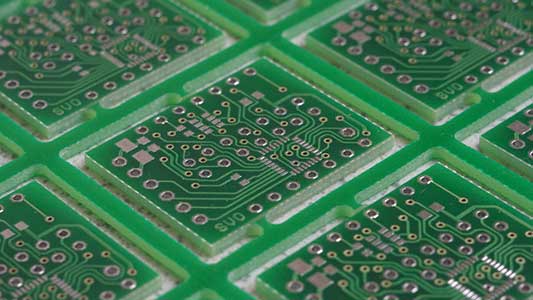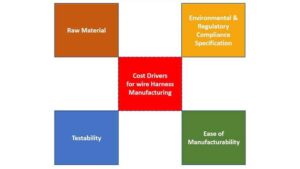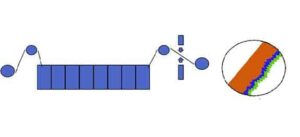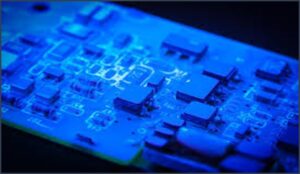PCB Assembly Cost
PCB assembly Cost affect multiple factors, including design complexity and product performance. The complexity of the project you want to construct will affect the cost of PCB assembly. The quality of your design and the component quality will also affect how much your finished product costs. Using low-skilled labour and having low overhead expenses can make PCB assembly labour affordable and cost-effective.
Your labour costs will rise if you choose to employ highly skilled workers. Your design’s size and number of layers will have an impact on how much it costs to make. Depending on the difficulty of the design and the amount of work required. Keep in mind that this figure can change depending on a variety of elements like labour rates and overhead costs. The size and complexity of your project will determine how long it takes to build a PCB. Due to labour costs and overhead expenditures, the cost of manufacturing may be greater or lower than this average price.
How much does it cost to assemble a PCB?
For Printed Circuit Board Assembly Cost Estimation, there are numerous factors that influence the cost of printed circuit board assembly. The technology and technique used, the amount of components, the package size, packaging, regulatory compliance, testing requirements, and quantity are only a few of the factors that have a direct impact on the costs. Non-direct factors such as a lack of design reviews, DFA or DFM experience (Design for Assembly and Design for Manufacturing), a shortage of qualified workers, and a lack of testing equipment all contribute to the overall cost of printed circuit board assembly. In the design phase, important factors should not be overlooked.
DFM defines the method to be followed while designing a product to ensure that manufacturing costs are kept to a minimum and that problems are avoided during the design phase. If not done correctly, the design, size, and placement of components can have a huge impact and increase costs. Another step to keep in mind throughout the design phase is the DFA process. The components chosen during the design phase should be examined, and a decision should be taken as to whether the element may be eliminated or combined with other parts in the assembly. An estimate of the time required to hold, grasp, operate, and insert the part should also be considered.
Labour Costs
When we talk about PCB assembly cost, we consider a variety of aspects such as labour expenses, technology used, part packaging, board quantity, turn time, amount of fine pitched parts used, and so on. While the majority of the above-mentioned factors stay consistent across regions, labour prices differ. As a result, numerous elements must be considered in order to create a cost-effective PCB assembly.
As previously stated, labour costs vary depending on the region where the boards are built because assembly includes both automated and human contact. So, if labour is inexpensive, the total cost will undoubtedly be lower. A board produced in North America, for example, will be three to four times more expensive than one assembled in Asia due to the availability of inexpensive and competent labour. Despite the fact that labour expenses in Asia have risen dramatically over the last decade, the overall cost remains lower.
Turnaround time
The cost of assembly may also vary depending on the turnaround time. Shorter assembly times may raise costs by more than 30% – 200% when compared to standard assembly durations. For an expedited assembly, the manufacturer may have to hold existing orders in order to focus on the expedited order; expedited shipping costs more, and in some cases, the manufacturing location may have to be compromised in order to meet the deadline, increasing the assembly cost significantly in some cases.
Quantity of boards to be assembled
When ordering in small quantities, assembly pricing can be misleading. When compared to the total cost of boards manufactured in larger quantities, the total assembly cost for prototype boards may appear substantially lower. However, what many people fail to see is that when huge amounts of assembly are created, the unit price of assembly falls dramatically. The cost of assembly is determined by a number of factors, including initial setup, stencil, and programming. As a result, while this cost is important for prototype boards, it becomes insignificant for larger quantities because it is a one-time expense that does not need to be repeated.
Technology used
Another key aspect that influences assembly costs is the type of technology utilised, which might be through-hole technology, surface mount technology (SMT), or both. While SMT is less expensive due to the low initial cost of setup and increased component density, it is occasionally necessary to put all surface mount devices (SMDs) on a board. At this time, through-hole technology is used. As a result, the cost rises since more drilling of the boards and a reduction in the routing area are required.
Packaging of the parts
Because electronic components come in various containers, assembly costs may vary depending on the packing of the parts. Parts such as BGAs and QFNs have a greater assembly cost since they contain electrical connections beneath them and require a higher level of accuracy to position. They also need to be X-rayed to check for voids and short circuits between the pins. This raises the assembly cost of these parts in comparison to more generic packages such as SMD, 0603, 0805, 1206 and so on.
To summarise, the cost of PCB assembly is determined by labour costs, stencil costs, turnaround time, the number of assembled boards required, and the packaging of the parts utilised. Programming of the board is sometimes required, although Bittele does not charge any programming fees.
EMSxchange Enables you to select a Printed Circuit Board assembly suppliers meeting your Required PCBA Manufacturing Capability, capacity and Certification Criteria from a global PCB Assembly manufacturer base. EMSXchange takes complete responsibility and ownership for your electronic manufacturing process and all its deliverables from contract manufacturing supplier selection to manufacturing to quality inspection to shipment and delivery to your door. EMSxchange Electronic Manufacturing Partners Profile includes:
Argus Sytems (AESPL) – PCBA, Cable Assembly, Box Build.
Cerra Systems inc – PCB Manufacturing.




